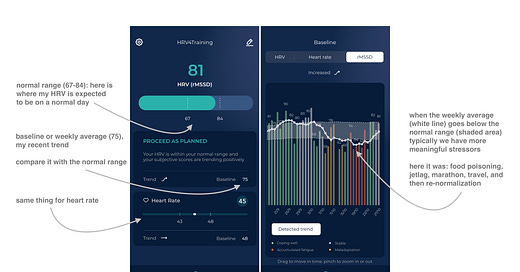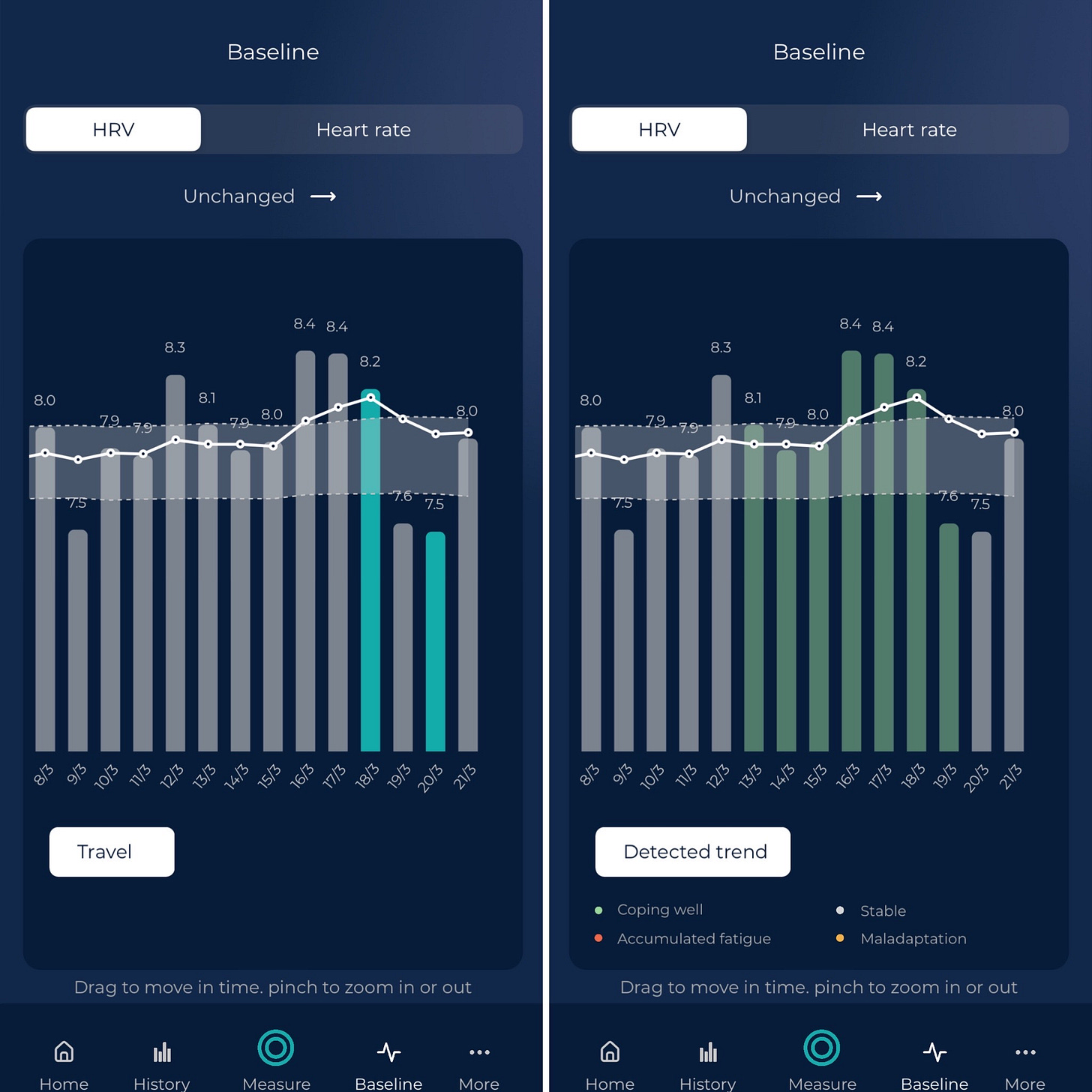hi there 👋
I hope everything is well.
This week I’d like to discuss how data is used on a day-to-day basis and what we should probably focus on, despite the recent trends in wearable technology (e.g. made-up scores being front and center).
In particular, I think wearables promote a very reactive approach, typically based on blind guidance.
You are often prompted to react based on made-up, cumulative scores (readiness, recovery, stress, etc.), with little focus on the long-term picture.
Most importantly, you are not adjusting a plan, you are making it up as you go: that's not how you improve your health or performance.
The made-up score is low? you need rest. The made-up score is high? go smash it.
Simplistic, inaccurate, and overly reactive.
In my opinion, there is a better way of using the data we can collect:
Start with a plan.
Assess how you are responding (your actual physiology: heart rate, HRV, etc., forget about made-up scores). Ideally, log how you subjectively feel as well.
As you collect more data, focus less on acute or day-to-day changes, and start looking at longer-term changes, e.g. your baseline or weekly average with respect to your normal range (or 1-2 months of history), see below for an example.
There is always day-to-day variability in any metric, but most of the changes have little or no value. This is why it is key to contextualize daily values with respect to our normal range: on most occasions, things are just normal, and no particular changes are required.

Once you are able to identify meaningful changes in your resting physiology (i.e. changes outside of your normal range), start taking note of how physiological changes reflect your short and long-term choices (training, lifestyle) as well as environmental factors (climate, season) and other events (e.g. sickness).
Only then, potentially make small adjustments and see if your physiology is more stable (for HRV, fewer dips or swings in morning or possibly night measurements is a good sign, even when there is no increase over time in the metric: see this blog for details).
Most importantly, see how health and performance outcomes are impacted: the metrics might help you in getting there, but should not be the sole focus.
Don’t be too reactive.
Identify rare, meaningful changes.
Good tools are boring.
Discount for Pro: 20% off
HRV4Training Pro is the ultimate platform to help you analyze and interpret your physiological data, for individuals and teams.
You can find a guide here.
Try HRV4Training Pro for free at HRVTraining.web.app or use promo code SCIENCE for 20% off.
In the app, Pro brings the normal values view, which can help contextualizing longer-term changes, as well as rMSSD on the homepage, see an example below:
see you next week!
Marco holds a PhD cum laude in applied machine learning, a M.Sc. cum laude in computer science engineering, and a M.Sc. cum laude in human movement sciences and high-performance coaching.
He has published more than 50 papers and patents at the intersection between physiology, health, technology, and human performance.
He is co-founder of HRV4Training, advisor at Oura, guest lecturer at VU Amsterdam, and editor for IEEE Pervasive Computing Magazine. He loves running.
Social:
Twitter: @altini_marco.
Personal Substack.







